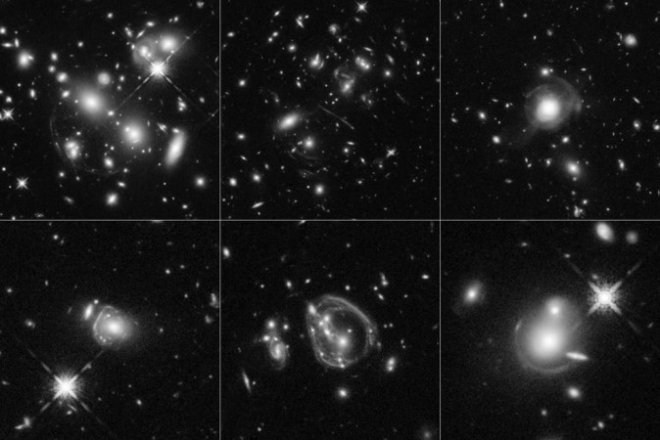
The National Aeronautics and Space Administration (NASA) has discovered the brightest galaxies in the universe with the help of its Hubble Space Telescope. It has captured the closest views of the most luminous infrared galaxies present in the universe which were 10,000 times brighter than our Milky Way.
The scientists used a cosmic phenomenon called gravitational lensing to magnify the galaxy images. A NASA statement revealed that these images show a tangled web of misshapen objects punctuated by rings and arcs like exotic patterns. The odd shapes are because the foreground lensing galaxies' powerful gravity distorts the images of the background galaxies
According to reports, the pictures of the galaxies captured by the Hubble telescope existed between 8 to 11.5 billion years ago when the star formation was happening at a high pace in the universe. The researchers said that quick birth of the stars is believed to be the reason behind the radiance of the galaxies, which were detected in infrared. In comparison to these galaxies, the Milky Way produces approximately less than two solar masses per year.
"The star-birth frenzy creates lots of dust, which enshrouds the galaxies, making them too faint to detect in visible light. But they glow fiercely in infrared light, shining with the brilliance of 10 to 100 trillion suns," a NASA statement said.
Gravitational lenses occur when the intense gravity of a massive galaxy or cluster of galaxies magnifies the light of fainter, more distant background sources. "We have hit the jackpot of gravitational lenses," James Lowenthal, the lead researcher from Smith College in Northampton, Massachusetts said.
"These ultra-luminous, massive, starburst galaxies are very rare. Gravitational lensing magnifies them so that you can see small details that otherwise are unimaginable. We can see features as small as about 100 light-years or less across. We want to understand what's powering these monsters, and gravitational lensing allows us to study them in greater detail," Lowenthal added.
The scientists says that a few of the odd shapes that can are visible in the images could be an outcome of collisions between distant massive galaxies. The researchers also revealed that only a few dozen of these luminous infrared galaxies are scattered in the universe.
Lowenthal said that these galaxies are present in unusually dense regions of the space which lead to rapid star formation in the early universe. It may hold clues to how galaxies were formed billions of years ago. "There are so many unknowns about star and galaxy formation," he added.
"We need to understand the extreme cases, such as these galaxies, as well as the average cases, like our Milky Way, in order to have a complete story about how galaxy and star formation happen," he further said.









